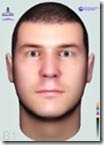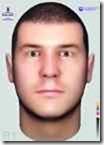The ability to define an output image quality of a CCTV system seems to have been lost as we moved into a digital age over the past 10 years.
If you looked at a surveillance system in year 2000, it was most likely a CCD camera connected to a multiplexer and a time lapse VCR. The specification in a tender would look like:
- 1/3″ CCD camera with 420 TVL, 1 lux @f1.4
- 16 channel real time multiplexer
- 24 hour time lapse VCR with 240 TVL resolution
Today’s CCTV tender document is more like:
- IP camera of 2MP or better
- H.264 compression
- capable of 25 images per second
- storage of 2TB or 30 days, which ever is greater
- Bandwidth not exceeding 6Mbps
- RAID5 redundancy
 Unfortunately none of the items in the above list actually tell us anything about the image quality we are going to end up with. What you typically want to know is will my CCTV camera allow me to identify this person from a group of suspects.
Unfortunately none of the items in the above list actually tell us anything about the image quality we are going to end up with. What you typically want to know is will my CCTV camera allow me to identify this person from a group of suspects.
Let me uncover some of the games we have seen played in the tender responses.
IP camera of 2MP or better
Most manufactures claim to produce this resolution but it is hard to find out at what frame rate it can product it, which is not guaranteed to be 25ips. The lux rating also tends to get worse as you go up in pixels.
What about the bandwidth and storage to record this.
H.264 compression
Most products offer h.264 but put them side by side and see if the images are the same. H.264 is a set of tool that as a manufacturer you can pick and choose from. Depending on the tools you use, you will get different image qualities and bandwidths. Don’t fall into the trap of a higher bandwidth means better quality either. For many it is just a poor quality implementation of the algorithm.
Capable of 25 images per second
Many products are CAPABLE of achieving this. However it may not be at the full resolution and you may drop frames here and there. Depending on the scene complexity (amount of change) the frame rate may drop as a person walks through.
Storage of 2TB or 30 days, which ever is greater
I can comply to the previous 3 statements fully and bluff my way through this one. Lets assume there are 30 cameras on this 2TB. There is no statement of motion type or frequency so I can cap the bandwidth of each camera to a low figure and get the 30 days in 2TB. Unfortunately the image will be very blocky but I complied.
Bandwidth not exceeding 6Mbps
Any camera can be capped but again depending on the quality of the compression h.264 algorithm the manufacturer has implemented it may be a lousy image. We have done side by side tests of encoders and seen one at 1Mbps give a better image at 25ips and full PTZ movement than the other at 6Mbps.
RAID5 redundancy
This one is a straight comply or don’t comply. However is the system intent to offer redundancy for a hard drive failing or the entire NVR failing?
If there is a HDD failure, can it be hot swapped? Will the system continue to record all cameras while the RAID array is rebuilding? Is there dual power supplies to the NVR? Can the NVR fail over to a secondary NVR of less capacity in the event of a major hardware failure? It is often expected that you are getting full redundancy but in fact are getting very little.
Ultimately when specifying image quality, you don’t need to discuss the compression algorithm or number of mega pixels.
The above clauses would allow me to give any of these images as compliant.
What you want is to know if the play back video (or live depending on the application) can maintain a measurable image quality at a given frame rate (ips).
Specifying camera pixel count, compression and file size really has little impact when comparing multiple products.
 The best method I have used is to specify a test chart of several peoples faces (as shown above) that is recorded under several criteria and then an independent person should be able to look at the recorded footage and identify which face it was from a group of similar faces.
The best method I have used is to specify a test chart of several peoples faces (as shown above) that is recorded under several criteria and then an independent person should be able to look at the recorded footage and identify which face it was from a group of similar faces.
The same can be done for number plates and other objects.
An example of the person identification charts I have had success with can be found here along with detailed instructions on using them.



